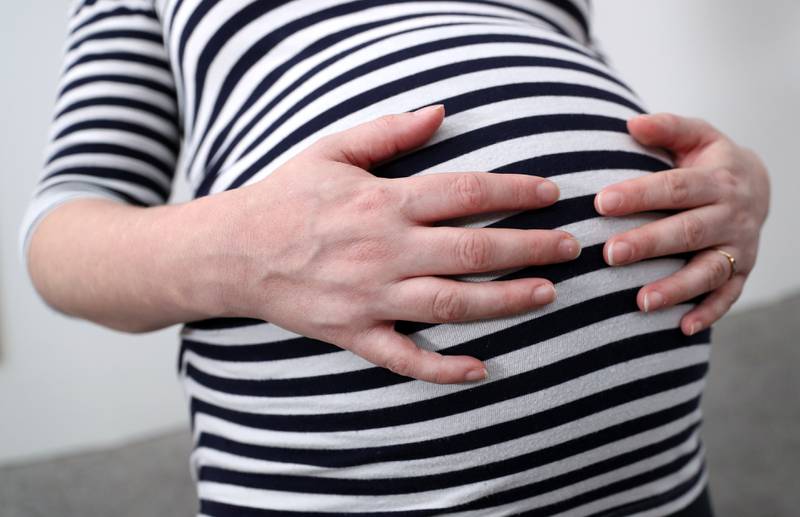Air pollution 'reaches babies in the womb'

Air pollution particles have been found in foetuses, researchers say, suggesting that soot nanoparticles can cross the placenta and get into organs of foetuses. University of Aberdeen and Hasselt University, Belgium experts said their finding was “especially concerning” because key organ development occurs when foetuses are growing in the uterus.
Researchers examined 60 pregnant mothers and their babies in Aberdeen and the Grampian region in Scotland. They also analysed tissue samples from 36 foetuses that had been aborted between seven and 20 weeks of gestation.Read More : Many patients stop taking statins because of muscle pain, but statins aren't causing it The team found evidence of “black carbon particles” — also known as soot particles — in umbilical cord blood, which shows that the particles can cross the placenta.
Soot particles were present in all mothers and newborns. The level of particles found was linked to the amount of air pollution to which the mother was exposed during pregnancy.
Five ways to stay fit during pregnancy
The research team also found the presence of such particles in the livers, lungs and brains of the foetuses.
Black carbon particles were found in all tissue samples analysed.
The scientists warned that the particles could be seen in foetuses as early as the first trimester of pregnancy.
This is the first time it has been shown that black carbon nanoparticles can be found in developing foetuses.
Black carbon is one of the many particles and gases that are emitted when diesel, coal and other biomass fuels are burned.
It is part of the fine particulate air pollution known as PM2.5. “We found that maternally inhaled carbonaceous air pollution particles can cross the placenta and then translocate into human foetal organs during gestation,” the authors wrote in the journal Lancet Planetary Health.
“These findings are especially concerning because this window of exposure is key to organ development.”
Prof Tim Nawrot, from Hasselt University, said: “We know that exposure to air pollution during pregnancy and infancy has been linked with still birth, pre-term birth, low weight babies and disturbed brain development, with consequences persisting throughout life .
“We show in this study that the number of black carbon particles that get into the mother are passed on proportionally to the placenta and into the baby.
“This means that air quality regulation should recognise this transfer during gestation and act to protect the most susceptible stages of human development.”
Prof Paul Fowler, from the University of Aberdeen, said the researchers were “worried that if nanoparticles were getting into the foetus, then they might be directly affecting its development in the womb".
“What we have shown for the first time is that black carbon air pollution nanoparticles not only get into the first and second trimester placenta, but then also find their way into the organs of the developing foetus, including the liver and lungs," Prof Fowler said
“What is even more worrying is that these black carbon particles also get into the developing human brain. "This means that it is possible for these nanoparticles to directly interact with control systems within human foetal organs and cells.”
Researchers examined 60 pregnant mothers and their babies in Aberdeen and the Grampian region in Scotland. They also analysed tissue samples from 36 foetuses that had been aborted between seven and 20 weeks of gestation.
Soot particles were present in all mothers and newborns. The level of particles found was linked to the amount of air pollution to which the mother was exposed during pregnancy.
Five ways to stay fit during pregnancy
The research team also found the presence of such particles in the livers, lungs and brains of the foetuses.
Black carbon particles were found in all tissue samples analysed.
The scientists warned that the particles could be seen in foetuses as early as the first trimester of pregnancy.
This is the first time it has been shown that black carbon nanoparticles can be found in developing foetuses.
Black carbon is one of the many particles and gases that are emitted when diesel, coal and other biomass fuels are burned.
It is part of the fine particulate air pollution known as PM2.5. “We found that maternally inhaled carbonaceous air pollution particles can cross the placenta and then translocate into human foetal organs during gestation,” the authors wrote in the journal Lancet Planetary Health.
“These findings are especially concerning because this window of exposure is key to organ development.”
Prof Tim Nawrot, from Hasselt University, said: “We know that exposure to air pollution during pregnancy and infancy has been linked with still birth, pre-term birth, low weight babies and disturbed brain development, with consequences persisting throughout life .
“We show in this study that the number of black carbon particles that get into the mother are passed on proportionally to the placenta and into the baby.
“This means that air quality regulation should recognise this transfer during gestation and act to protect the most susceptible stages of human development.”
Prof Paul Fowler, from the University of Aberdeen, said the researchers were “worried that if nanoparticles were getting into the foetus, then they might be directly affecting its development in the womb".
“What we have shown for the first time is that black carbon air pollution nanoparticles not only get into the first and second trimester placenta, but then also find their way into the organs of the developing foetus, including the liver and lungs," Prof Fowler said
“What is even more worrying is that these black carbon particles also get into the developing human brain. "This means that it is possible for these nanoparticles to directly interact with control systems within human foetal organs and cells.”
Source: www.thenationalnews.com
